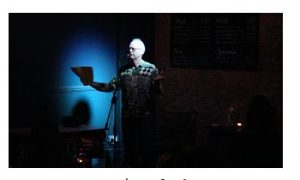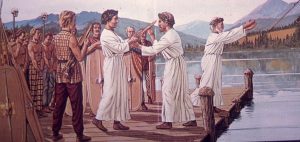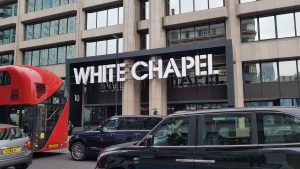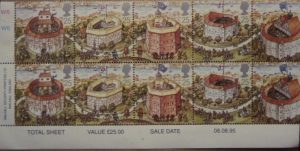‘Part human, part animal forms imagined in myth.’
See them in the Oldest Cave Paintings in the world recently discovered.

The Past brought to Life
‘Part human, part animal forms imagined in myth.’
See them in the Oldest Cave Paintings in the world recently discovered.
 pter 11 of my first novel at the Clapton Hart ‘Spineless’ Authors’ Night.
pter 11 of my first novel at the Clapton Hart ‘Spineless’ Authors’ Night.Thomas More & Thomas Cromwell’s London – The City of Wolf Hall
14:30 Sat 25th Jan 2020 Liverpool Street Station
The Walk creates a portrait of London in the early 16th Century, with particular emphasis on the life and times of Thomas Cromwell and Thomas More.
More and Cromwell had much in common, despite being on opposite sides of the religious devide, both lawyers, commoners, important figures in the City of London. They both rose to be Lord Chancellor to Henry VIII, and ended their career on the block at Tower Hill.
The walk visits the sites of Thomas More’s birthplace, and the Town houses of More and Cromwell before exploring the Tudor City of London, including the Guildhall and St. Pauls where Martin Luther’s books where burnt.
We end with an exploration of the Reformation at its London epicentre in Smithfield – site of the stake where Heretics were burnt alive, surrounded by Catholic Monasteries and playing a significant part in the life and downhall of Thomas More.
This is a London Walks guided walk given by Kevin Flude
Myths, Legends & the Origins of London. 
Jan 5 2019 10.45
Tower Hill Tube (meet by the Tower Hill Tram |
London like Rome has its myths of origins, and its legends of Gods, giants and super-heros. They are mostly derided by modern archaeologists. But is there any truth in them or are they just really interesting stories?
This walk, led by Kevin Flude, a former archaeologist at the Museum of London looks at the archaeological evidence of the origins of London and reconsiders London’s myths and legends.
London’s East End – The Peasants’ Revolt to Street Art.
Aldgate Tube High Street Exit 2.30pm Sat Dec 21st 2019
The walk sets out to explore as much of the East End as is possible in 2 hours. We start at Aldgate London’s ancient East Gate to investigate Roman and Medieval origins as well as the dramatic events of the Peasants Revolt of 1381.
The fields, Monasteries and villages of Whitechapel, Brick Lane, Spitalfields, Shoreditch and Hoxton became the home for poor people and groups of immigrants excluded from the City’s Guild system. From the 16th century it gave refuge to European protestants fleeing from French Catholic.repression. From the 17th century it welcomed Jewish refugees particularly from Russian, and in the 19th Irish, and exiles joined in.
17th century it welcomed Jewish refugees particularly from Russian, and in the 19th Irish, and exiles joined in.
The area was one of the main centres of industry for London until the 20th Century when the vacant workshops and the crumbling historic housing began to attract artists and bohemian incomers. The opportunities this gave created a vibrant new area and eventually must people began to appreciate the street art that covered virtually every inch of its walls.
Shakespeare’s London Locations – The places in the plays
2.30pm 21 Dec 19 Shored itch High Street Overground Station
itch High Street Overground Station
Most Shakespeare walks in London are biographical, this one is different. It is about the places in his plays. Exploring the places, the plays and the people the walk will hope to bring Shakespeare’s London to life amd give some insight to Shakespeare. And OK, there will be, perchance, something about his life in London, but we hope to keep this as one of those walks ‘which does what is says on the tin’. i.e. keeps focussed on the ‘places in the plays’. Sadly, in the 2 hours we have we won’t be able to get to Verona, or Venice but we might be able to shed some light on those locations by exploring their London equivalents.